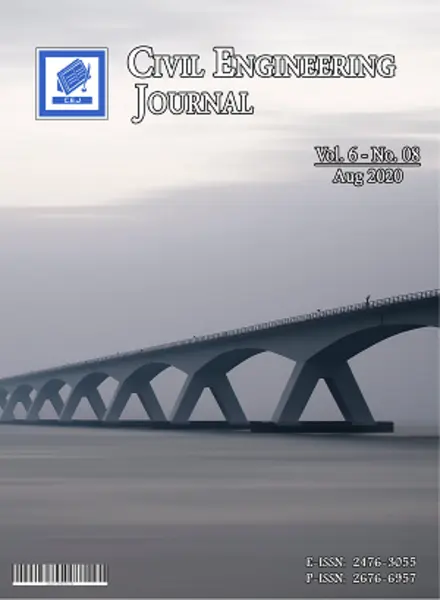-
application of tuned mass dampers for structural vibration control: a state-of-the-art review
جزئیات بیشتر مقاله- تاریخ ارائه: 1401/11/25
- تاریخ انتشار در تی پی بین: 1401/11/25
- تعداد بازدید: 200
- تعداد پرسش و پاسخ ها: 0
- شماره تماس ژورنال: 982188779475ext.258
application of tuned mass dampers for structural vibration control: a state-of-the-art review
given the burgeoning demand for construction of structures and high-rise buildings, controlling the structural vibrations under earthquake and other external dynamic forces seems more important than ever. vibration control devices can be classified into passive, active and hybrid control systems. the technologies commonly adopted to control vibration, reduce damage, and generally improve the structural performance, include, but not limited to, damping, vibration isolation, control of excitation forces, vibration absorber.
tuned mass dampers (tmds) have become a popular tool for protecting structures from unpredictable vibrations because of their relatively simple principles, their relatively easy performance optimization as shown in numerous recent successful applications. this paper presents a critical review of active, passive, semi-active and hybrid control systems of tmd used for preserving structures against forces induced by earthquake or wind, and provides a comparison of their efficiency, and comparative advantages and disadvantages.
despite the importance and recent advancement in this field, previous review studies have only focused on either passive or active tmds. hence this review covers the theoretical background of all types of tmds and discusses the structural, analytical, practical differences and the economic aspects of their application in structural control. moreover, this study identifies and highlights a range of knowledge gaps in the existing studies within this area of research.
among these research gaps, we identified that the current practices in determining the principle natural frequency of tmds needs improvement. furthermore, there is an increasing need for more complex methods of analysis for both tmd and structures that consider their nonlinear behavior as this can significantly improve the prediction of structural response and in turn, the optimization of tmds.
حوزه های تحت پوشش ژورنال
مقالات جدیدترین رویدادها
-
استفاده از تحلیل اهمیت-عملکرد در ارائه الگوی مدیریت خلاقیت سازمانی و ارائه راهکار جهت بهبود
-
بررسی تاثیر ارزش وجوه نقد مازاد بر ساختار سرمایه شرکت های پذیرفته شده در بورس اوراق بهادار تهران
-
بررسی تأثیر سطح افشای ریسک بر قرارداد بدهی شرکت های پذیرفته شده در بورس اوراق بهادار تهران
-
بررسی تأثیر رتبه بندی اعتباری مبتنی بر مدل امتیاز بازار نوظهور بر نقد شوندگی سهام با تأکید بر خصوصی سازی شرکت ها
-
تأثیر آمیخته بازاریابی پوشاک ایرانی بر تصویر ذهنی مشتری پوشاک ایرانی (هاکوپیان)
-
بررسی تأثیر الیاف ژئوتکستایل در بهبود مقاومت فشاری و سایشی بتن های نانوسیلیس و کاربرد آن در سرریز سدها
-
روندیابی دبی اوج سیلاب در امتداد طولی رودخانه کرخه با استفاده از مدل رگرسیونی و تعیین توزیع آماری مناسب برای ایستگاه های هیدرومتری جلوگیر، پای پل، عبداخان، حمیدیه، هوفل و نیسان
-
correlation on inclusion and microstructure characters on fatigue properties of hot rolled ck45 steel
-
adult and umbilical cord blood-derived platelet-rich plasma for mesenchymal stem cell proliferation, chemotaxis, and cryo-preservation
-
an integrated microfluidic platform for rapid detection and subtyping of influenza viruses from clinical samples
مقالات جدیدترین ژورنال ها
-
مدیریت و بررسی افسردگی دانش آموزان دختر مقطع متوسطه دوم در دروان کرونا در شهرستان دزفول
-
مدیریت و بررسی خرد سیاسی در اندیشه ی فردوسی در ادب ایران
-
واکاوی و مدیریت توصیفی قلمدان(جاکلیدی)ضریح در موزه آستان قدس رضوی
-
بررسی تاثیر خلاقیت، دانش و انگیزه کارکنان بر پیشنهادات نوآورانه کارکنان ( مورد مطالعه: هتل های 3 و 4 ستاره استان کرمان)
-
بررسی تاثیر کیفیت سیستم های اطلاعاتی بر تصمیم گیری موفق در شرکتهای تولیدی استان اصفهان (مورد مطالعه: مدیران شرکتهای تولیدی استان اصفهان)
-
تاثیر فضای مجازی بر سبک زندگی و هویت نوجوانان در دوران اپیدمی کرونا
-
سنت و مدرنیته و در مساله هویت زنان با تکیه بر آثار هوشنگ گلشیری
-
بررسی تاثیر سبک رهبری تحول آفرین بر توانمندسازی کارکنان (مطالعه موردی: کارکنان در معاونت اداری و مالی شهرداری مشهد)
-
تاثیر جو اخلاقی سازمانی بر سکوت کارکنان با نقش میانجی درک از حمایت سازمانی
-
مسائل حقوقی مالکیت زمین های مسکن مهر


سوال خود را در مورد این مقاله مطرح نمایید :